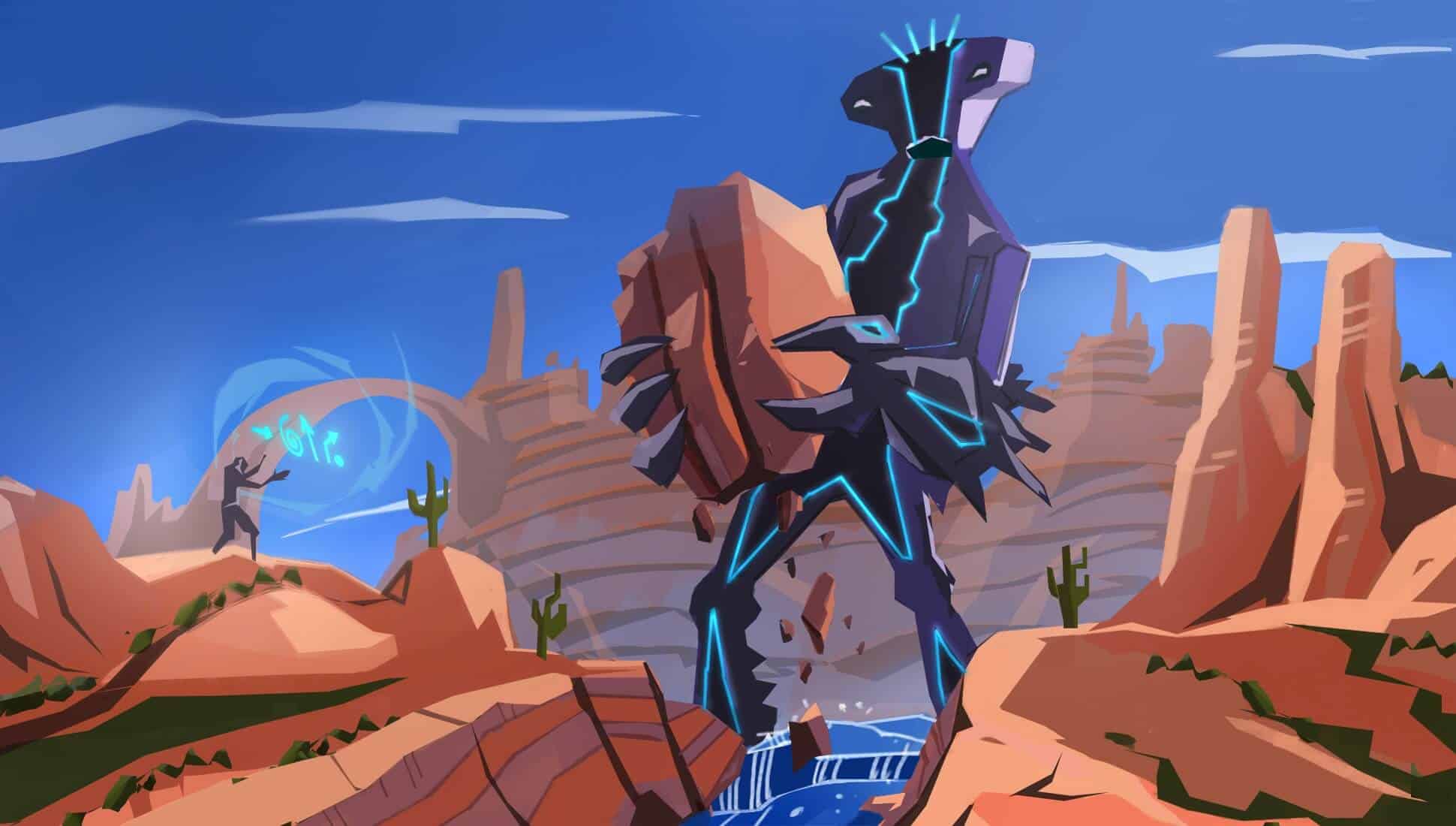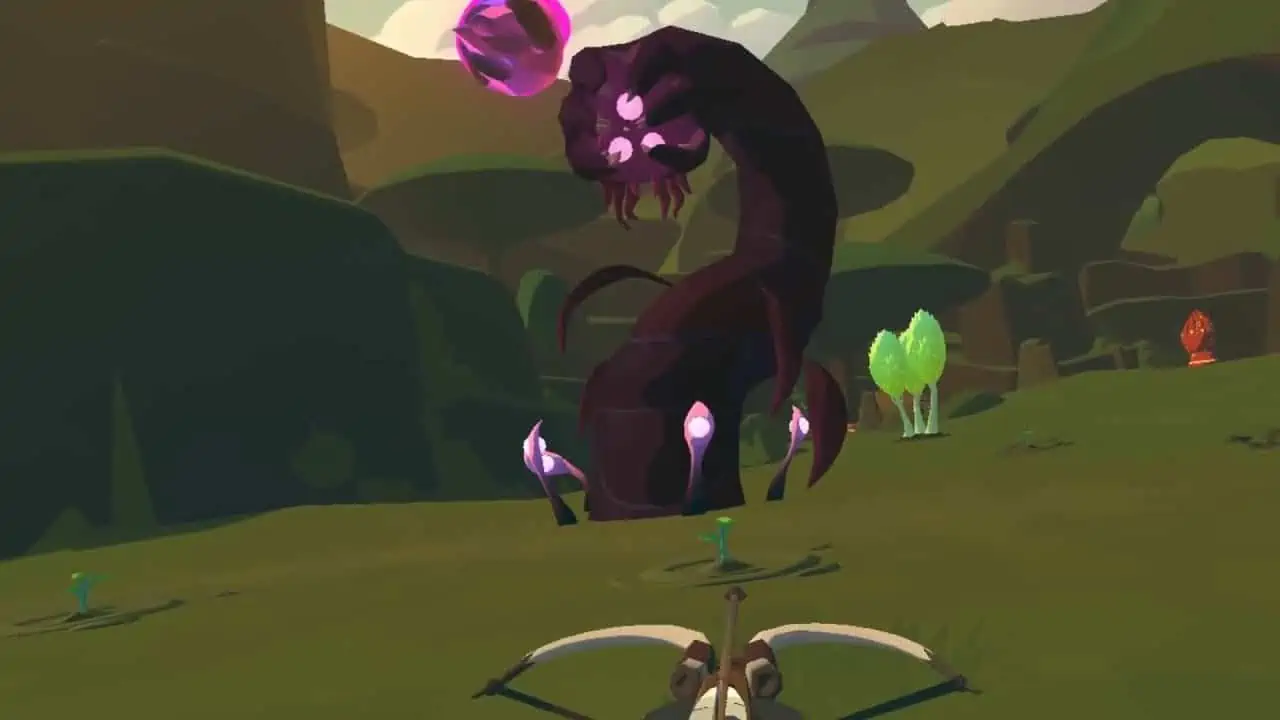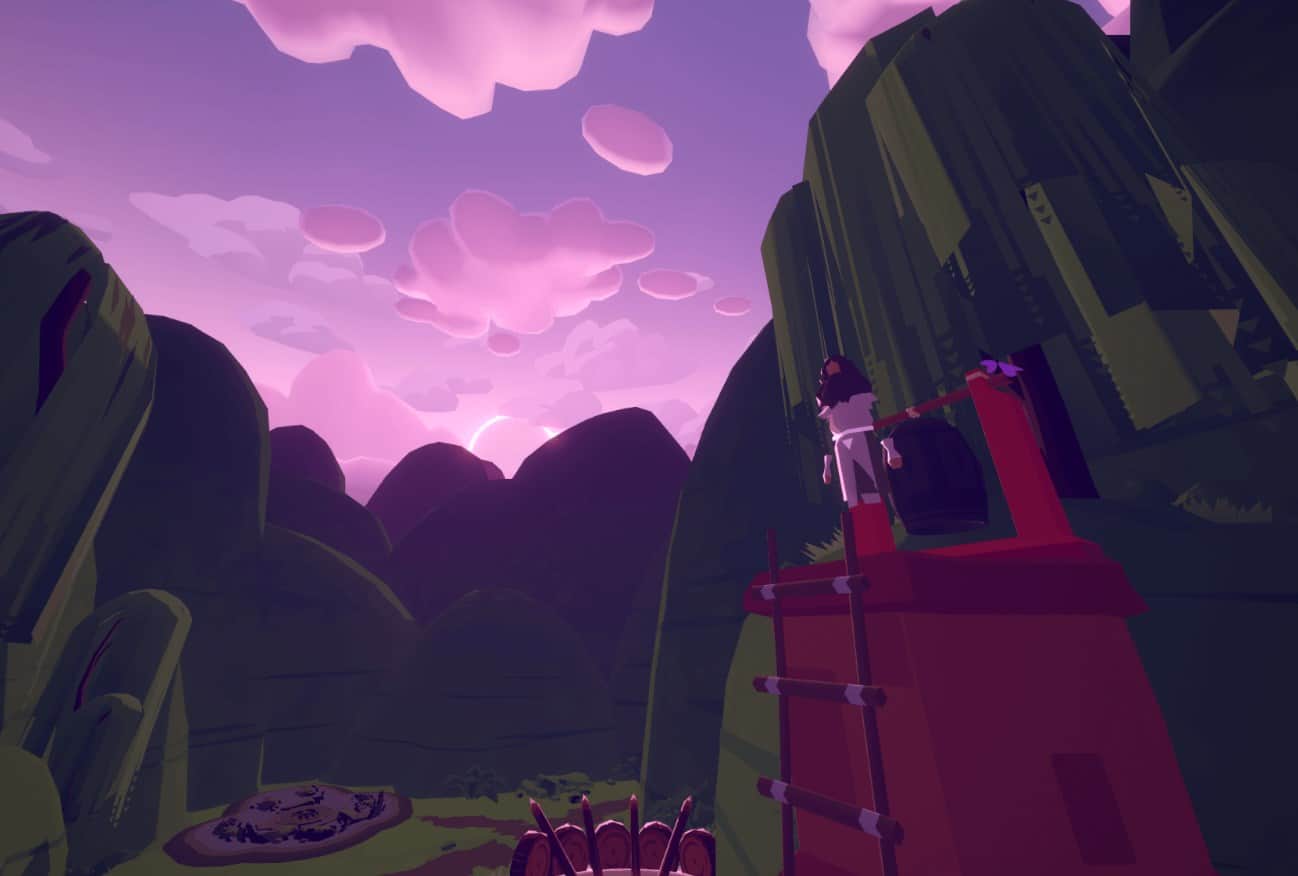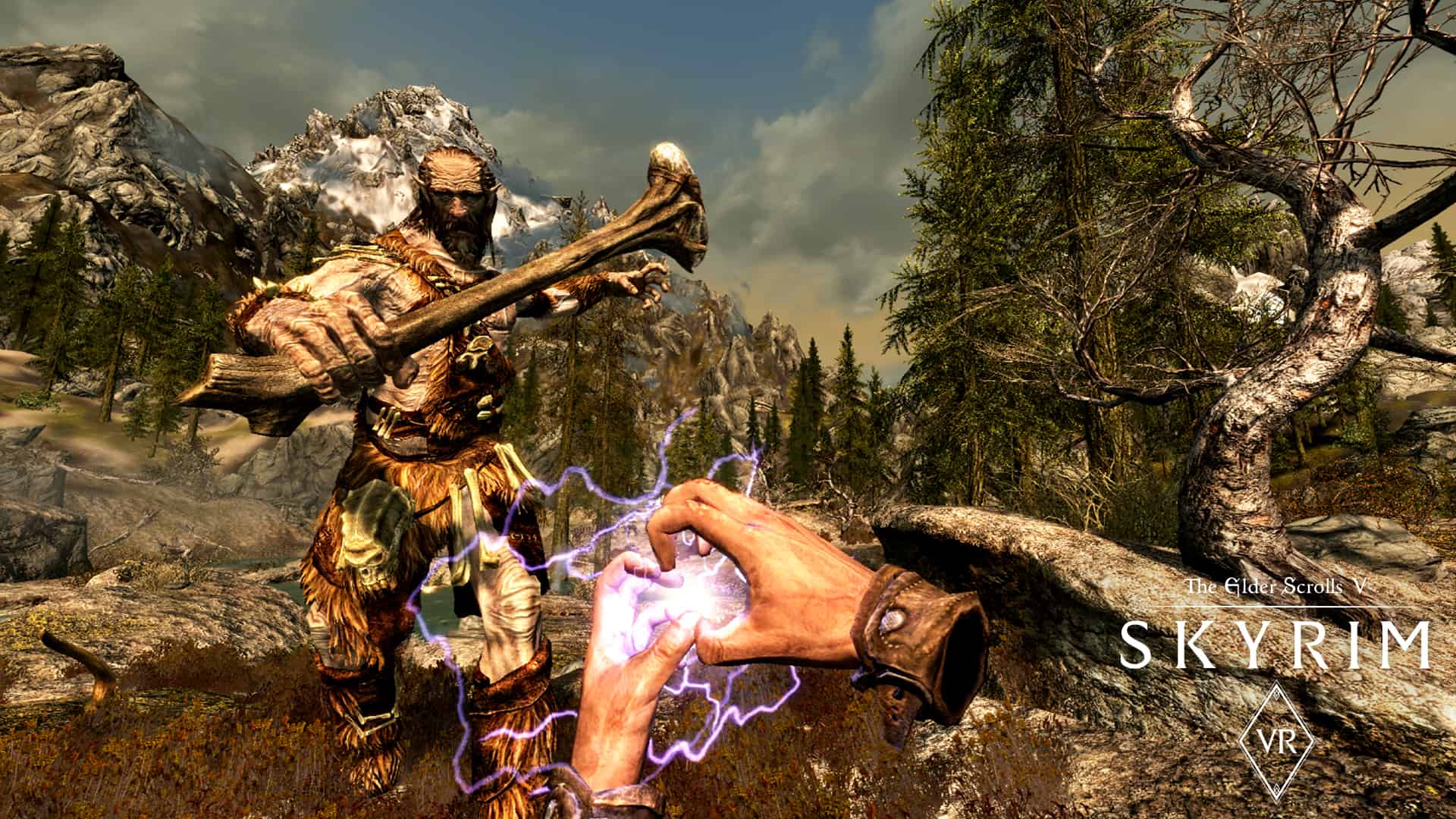- Best Entry Level VR Headsets - December 25, 2022
- VR Games on our Radar in 2023 - December 15, 2022
- Ashok Interview - December 1, 2022
Back in 2017, the gaming world got a massive influx of big-time games in the first half o the year. The biggest argument was none other than The Legend of Zelda: Breath of the Wild. The game rewrote the open world genre in so many ways that it’s hard to describe, but in general, it was seen as a game changer for gaming in general.
Since then, we’ve seen countless copycats of varying success, but one medium that had yet to try and come up with its own spin on it was virtual reality. That was until Journey of the Gods was released.
As soon as you start the game, you can see the influences of Breath of the Wild all over the place. From the graphics to the sword and shield music to the different tools and weapons you get to mess around with, it just screams Zelda. Hell, the shield you use even has a symbol strongly resembling Link’s iconic shield on it.
Does that mean the game is bad or void of its own ideas? No, not at all, in fact, it’s quite a fun time in VR, and regardless of its influences, it has several fun mechanics to play around with to go with some solid if unspectacular combat.
It’s not the most complex VR experience out there, but Journey of the Gods is a fun time for some simple adventuring and some satisfying visuals. Here’s everything there is to know about Journey to the Gods.
Bottom Line Up Front
Journey to the Gods is a VR adventure game that gives you a handful of weapons and tools to play with and lets you explore the world with them. It’s not a long adventure, but it’s one that you should definitely experience once, if only for the amazing sounds and visuals on display.
What is Journey of the Gods?

It’s easy to call the game a Breath of the Wild clone, but where Journey of the Gods differentiates heavily is you get the unique ability to grow to the size of a god. This is a very cool mechanic that few games have utilized. Once god sized, you can influence things around the world like getting rid of blocked passages or even throwing down lightning bolts. The power trip is a real one here, and it’s a very fun experience, even if it does get a little bit old after a while.
When you’re not moving things around as a god, you are engaging in combat that is more similar to VR dungeon crawler games like Karnage Chronicles or Skyrim VR.
Story
There isn’t a ton here, but the basic idea is the gods are asleep, and corruption is slowly invading. You are a god who has awoken and has to go on a journey in order to wake up the gods and restore order to the world. It’s not groundbreaking, but it’s effective enough and gives you reasons to push on.
Missions
The missions here are pretty straightforward. You will be fighting off hordes of enemies with some light platforming in between. Occasionally, you will uncover artifacts and new weapon upgrades, which add a considerable amount to the gameplay. I found the game to be at its very best when engaged in melee combat, so the missions where fighting was front and center did the trick for me.
The missions start pretty basically, and the side quests also take on this quality as they’re usually a collection of fetch quests with a few fights spread out between them. Still, as the game continues, the environments get stranger and stranger, lending some variety to the mundane activities you’re performing.
Seeing as all of the missions generally end in an epic boss fight, the best ones in the game take place in the latter half, with the final few missions taking place in a simply amazing-looking area that I won’t spoil. Keep pushing through this one, as the best part is the second half. You won’t need much time to get there with six total levels to explore.
The World
It’s a pretty gorgeous world you get to explore. Throughout, you’ll run into various friendly NPCs and dangerous enemies. The townsfolk all are faceless but oddly expressive with their movements despite this. They don’t have much to say, but just the charm of being in the home hub is a nice reprieve from the intense action of the main mission segments.
Enemies

The enemies come in a variety of different types. Some are your basic fodder like these purple, squid-like creatures, but as you progress, you feel the enemy types change with you, and eventually, you’ll be fighting some pretty fearsome spider robot creatures.
These creatures are huge and have a laser that will seek you out and do big-time damage if not blocked. This is where the combat system shines, and being able to block the lasers with your shield and charge in for the killing blow with your sword is what Zelda fans have dreamed of for 30 years. Enemies like this make Journey of the Gods shine the brightest.
When it comes to bosses, this is where the fun comes in. These bosses are huge and feel appropriate for creatures opposing the gods. These bosses can be damaged from god mode, but they aren’t pushovers even if you saved up the energy to damage them in god form.
Each of these huge creatures has its own boss arena, which is just gorgeous to see. Some of the bosses are very strange and unique looking, so the Zelda influence starts to disappear, and the Journey of the Gods personality gets to distinguish itself much more. Your bosses range from gigantic, Kraken-type monstrosities to some more magical-looking beings that I won’t spoil here. Just know that they are the highlight of each level, and each one involves some unique mechanics that are clever and fun to figure out.
Exploration
You are technically not in an open world here but rather a collection of linear levels that give you a lot of room for moving around. The problem is there isn’t really a reason to justify this much space. Sure, you can check out the sights, but the secrets are few and far between here, and other games tend to utilize this better. Things you can find in these environments include artifacts, which, when you collect three of, you can then upgrade your weapons to do more damage.
It gives you a little incentive, but I never really noticed the upgrades helping me all that much. You will also come across various people throughout your travels, allowing you to take on various side missions for each section.
The side missions are nothing special, but they result in various rewards you can use to purchase equipment in town.
Combat

The combat is relatively simple, and you’ll get a few different weapons, including a sword, shield, and crossbow, to mess around with. The sword and shield are pretty typical for VR, but it’s still plenty of fun to use here, with you blocking with one arm and attacking with the other.
As you upgrade, you’ll unlock sword projectiles, which gives you a ranged option when your melee weapons are out. It’s a nice progression here, and while it doesn’t change the combat a ton, it’s enough over the 6-hour Journey to give you a feeling of growth.
Weapons
- Sword and shield
- Crossbow
It doesn’t feel like much physics is at play here, so you don’t have to worry about throwing your arm out when swinging your weapons around. The key to combat here is to find the weaknesses of each enemy, and some enemies will have weaknesses only reachable by your crossbow, and switching between ranged and melee in Journey of The Gods is pretty seamless.
To use your crossbow, you must manually lead up the crossbow each time. While it can be a bit annoying in the heat of combat, it’s incredibly immersive, and I appreciate the extra attention to detail. The timing was solid and had a bit of a learning curve to get the exact way you need.
You unlock more powerful bolts like ice arrows and flame shots as you progress, so if it feels dull at first, start upgrading, and you’ll be treated to some fun effects. The charge shot is a favorite of mine as it feels quite powerful, and you need some skill to time it properly.
When you transform into a god, you can also engage in combat, where your lightning bolts come into play. You can use these to strike down the larger enemies in the game, including bosses. The trick here is that you will not be able to stay in this form infinitely, and it relies on an energy system that will slowly run out as you perform tasks as a god. The lightning bolts are very effective, but to get the most out of god mode, you need to defeat smaller enemies to charge the meter up.
God Mode
God mode is interesting because there are a few different styles of it. One makes you a towering Zeus-like figure who can shift the world to their liking. This is where a lot of the puzzles happen in the game. While they aren’t too in-depth, they are fun to solve as you can grow trees, destroy pathways and move things around, and smite smaller enemies with a single blow.
Your other method of god mode comes in the form of a Golem-like entity, where you don rock hands and can destroy anything in your way. In fact, enemies actually run away while you’re in this mode, and if you hit them, they will die instantly. This is by far my favorite mode, as you get all the god powers without having to deal with the crazy feeling of growing to enormous heights.
God Mode Powers
- Terrain shifting
- One hit kills to small enemies
- Lightning Bolts
- Rock Hands
- High Defense
Movement

Journey of the Gods allows you to use teleportation and snap turning. These might be necessary as going from god mode to normal mode is a pretty jarring transition. For those with motion sickness, the move from being on the land to towering above is an incredible thing to witness. Still, the problem is the height difference changes differently, so for those with a fear of heights, I would recommend only going to this mode when you absolutely have to.
For me, teleportation has always made games tougher to play in VR while also taking the immersion out of the game. You are playing as a god here, so I guess you can teleport without technically making anything seem out of the ordinary. The bottom line is if you want the movement options, they are there for you, and no matter what kind of VR player you are, you will likely find something that works well for you here.
Tips
Use the Crossbow
I love the melee combat in this game, and despite it being pretty limited, the sword and shield not only make the game more fun to play but also more challenging. I found the crossbow to trivialize a lot of the combat encounters a lot of the time. This is especially true when you unlock the ice arrow. This makes combat so much easier, and once you get this, you will find a lot of the combat, even some of the bosses become a pushover.
Get to know your Sword and Shield
While many combat encounters can be swung through with ease, as you progress in the game, you will start to get swarmed by enemies in large packs. Here, the crossbow won’t help all that much, and you need to be proficient with the sword and shield. Hopefully, you’ve unlocked the projectile at this point because it actually can get pretty tough.
Defense is the Best Offense
It would be best to defend before striking, as many of these enemies have long-range damage capabilities. Your shield is your best friend, but it’s reliant on actually making contact with projectiles to block them, so you need to focus here.
The same goes for the sword, as you must effectively pinpoint your strikes to take out enemies. Some will have obvious weak points, so when you see them, start swinging as you will only get in as many hits as you attempt before an enemy tries to defend itself.
Games like Journey of the Gods

Skyrim VR– An Epic, open-world RPG with sword and shield combat and bows and magic powers. Side quests for days and endless content added by mods will make this a great one to try after Journey of the Gods.
Asgard’s Wrath– Much like Journey of the Gods in almost every way. The combat is more position based than skill-based, but the aesthetic is similar, and the adventure itself shares many of the same themes.
Fallout 4 VR– Open world, apocalyptic RPG that has you traversing a mysterious landscape. Tons of quests, secrets to discover, and side missions to explore.
Karnage Chronicles– Similar aesthetically to Journey of the Gods, you and a friend go on dungeon-crawling missions to rid the world of spreading corruption. Sound familiar? Bosses are the highlight here as well as some great physics-based sword and shield gameplay with archery mixed in.
FAQ
Question: Is Journey of the Gods an RPG?
Answer: Yes, you will have access to the main quest and side quests, and you will progress and upgrade your character while playing. It’s definitely an adventure-based RPG but definitely fits the mold.
Question: Is Journey of the Gods like Breath of the Wild?
Answer: The two games have plenty of similarities, but Journey of the Gods stands out with its unique creatures and characters. You can latch on to animals for transportation too, which is something that you can only do in VR and something that Breath of the Wild can’t recreate.
Question: Is Journey of the Gods on Oculus Quest 2?
Answer: Yes, it is one of the only games of its kind available on the Oculus Quest 2. Very few full-campaigned, single-player games exist there right now, so Journey of the Gods should definitely be given a try.
Conclusion
Journey of the Gods is an easy-to-pick-up and-play VR game that will give you a solid adventure and some truly beautiful-looking visuals in the process. It’s not the most challenging game ever, but it will keep you busy for 5-6 hours and has a handful of side content for you to experience too. For those looking for their adventure RPG fix, few games satisfy it, like Journey of the Gods.
Continue reading:

